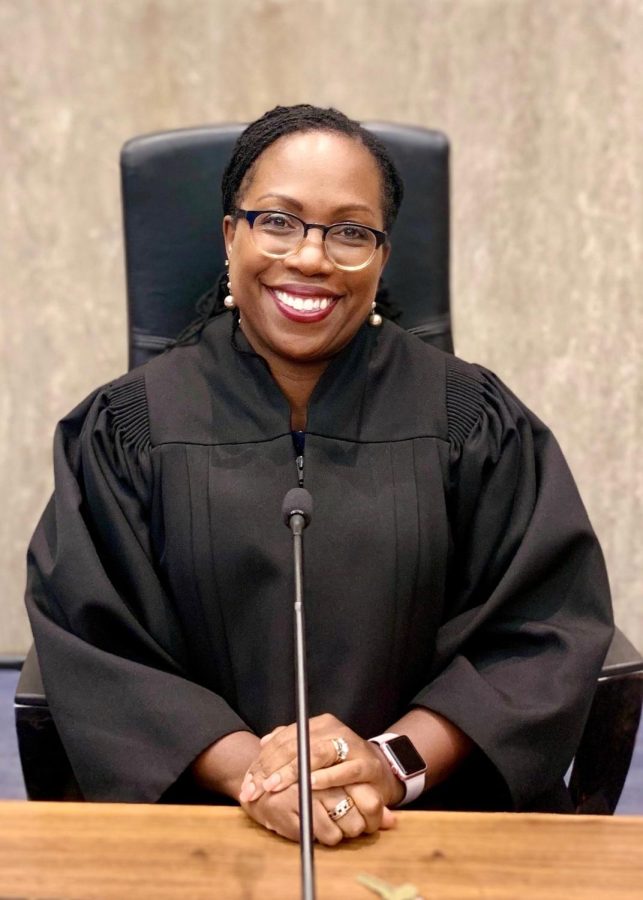Torres: Women of Color are Undervalued
April 18, 2022
Justice Ketanji Brown Jackson is one of the most qualified members of the Supreme Court. As a Black woman, she will provide an invaluable perspective that will undoubtedly result in historic rulings. Despite this, the court vote to nominate Justice Jackson deadlocked, and the votes that confirmed her split 53-47. Justice Barrett, a white woman who is not nearly as qualified as Justice Jackson, was confirmed to the Supreme Court only two years prior.
Women of color and their achievements are devalued compared to white women. The contrast between Justice Jackson and Justice Barrett is appalling but familiar to women from oppressed racial groups across the nation. Professional and academic spaces consistently undervalue women of color in comparison to their white counterparts.
Utah remains standing as one of the worst states for gender equality for women year after year. The infamous wage gap highlights the disparity between white women and women of color. White women make 68 cents to the dollar compared to men in Utah. On the lower end of the spectrum, Native American women make 52 cents, Black women make 51 cents and Latinas make 49 cents to the dollar. Most studies also don’t account for the experiences of trans people when counting the gender-based wage gaps. We’ve known this information for years, yet the gap continues.
More factors contribute to the gap in Utah between white women and women of color than the zeros on a paycheck, such as occupational segregation, where women of color are more likely to occupy lower paying jobs. Initiatives to boost diversity mostly focus on hiring either more women or hiring more people of color — they don’t focus on the intersection of hiring women of color. Affirmative action measures also disproportionately benefit white women.
Without an intersectional approach, women of color, especially Black women, experience more blatant forms of discrimination. In an article for the Brookings Institution, Adia Harvey Wingfield, a professor of sociology, said, “While Black women doctors encountered persistent, daily gender biases that occurred in the context of structural, radicalized barriers — both of which made advancement in the profession difficult — Black women nurses reported few instances with gender biases and instead described routine, frequent and explicitly racist encounters with colleagues.”
In 2020, only 1.68% of staff at the University of Utah were Black. The U also reported 64.44% female staff members but 70.71% white members. The data doesn’t report the gender division of the racial statistics, so we can only assume that approximately 18.87% of the staff at the U are women of color. Once again, the collection of this data excludes the experience of trans employees. Utah also has a history of ignoring reports of racial discrimination, which can be discouraging to victims. The U’s transparency regarding incidences of discrimination has improved, but when the institution remains predominantly white, there likely isn’t enough peer allyship to support victims.
The exclusion of women of color has a ripple effect. Wingfield addresses the impact of racism and sexism on women of color in her article. She said, “both factors adversely affect women in a variety of occupations through stifled leadership opportunities, the ongoing persistence of specific forms of sexual harassment, and subtle but pervasive doubts about competence, intelligence and skill that are unrelated to actual performance.”
A 2021 study of Women in the Workplace by McKinsey & Company finds that women in the workplace experience burnout to an unprecedented degree, more than their male colleagues. Although the study found that companies have increased diversity and inclusion efforts, women of color experience higher rates of microaggressions. Dealing with microaggressions on top of a stressful work environment is exhausting. When women of color aren’t present in the workplace, there is a gap in allyship and advocacy for their conditions.
Although most white people in the workplace see themselves as allies to ethnic and racial minorities, white people are less likely to speak out against racial discrimination. Black and Latine women are more likely to speak out, but are also more likely to receive retaliation in response. A study done by the Billie Jean King Leadership Initiative in 2021 found that up to 70% of women of color feel that they have to consistently prove themselves in the workplace. Women of color are also less likely to feel supported by supervisors and more likely to feel undervalued compared to white women.
Women of color shouldn’t have to fight tooth and nail for a seat at the table. The spotlight placed on women has been centered on the experiences of white women for too long. Justice Jackson’s achievement represents a turning point. Women of color don’t exist as statistics for grant applications or end-of-year Equity Diversity and Inclusion reports. The perspective they bring as members of intersecting oppressed groups innovates the conversations that historically excluded them. The struggles for gender equality are inherently intertwined with racial equality. As long as racism exists, so will misogyny.
To report an incident of discrimination at the University of Utah, visit the website of the Office of Equal Opportunity, Affirmative Action, and Title IX.









Jackson • Apr 19, 2022 at 6:12 pm
Very interesting to exclude Asian women from an article devoted to women of color. I wonder if it is because Asians while being a minority in the United States still outperform the majority of the population.
martine • Apr 19, 2022 at 5:32 pm
How trendy. So are there no undervalued women of non color? Or is this just more jibber jabber from the office of diversity and pc enforcement. Sounds kind of racis to attribute special powers or conditions based on skin color.